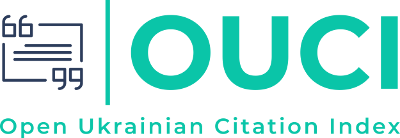ON USING OF FRAME-BASED SENTENCE PATTERNS IN Integrative computer-aided language learning system
Ключові слова:
frame, frame-based paradigm, second language acquisition, language learning system, integrative approachАнотація
The given work is devoted to the task of compact representation of a huge number of variants of the thought expression. The task is important for building an effective linguistic environment. The solution is based on frame knowledge representation paradigm improved to represent syntactic structures.
Посилання
1. Warschauer M. (1996) "Computer Assisted Language Learning: an Introduction". In Fotos S. (ed.) Multimedia language teaching, Tokyo: Logos International: 3-20.
2. Wan Y. An Integrative Approach to Teaching English as a Second Language: The Hong Kong Case. Conference on English Language Learning for the 21st Century (Hong Kong, January 1996). – 14 p.
3. Lightbown P. M., Spada, N. How languages are learned. Oxford: Oxford University Press. – 1998. – 135 p.
4. Lightbown P. M., Spada, N. How languages are learned. Oxford: Oxford University Press. 1998. 135 p.
5. Warschauer M. (1996) "Computer Assisted Language Learning: an Introduction". In Fotos S. (ed.) Multimedia language teaching, Tokyo: Logos International: 3-20.
6. Wang C. On Linguistic Environment for Foreign Language Acquisition. Asian culture and history. Vol.1 No.1. 2009, pp. 58-62.
7. Litvinov A.A. On formalization of computer-aided language learning system scenario. // System technologies. – N.1(108). – Dnepropetrovsk, 2017, pp. 63-70.
8. M. Minsky 1975. ‘A Framework for Representing Knowledge’. In The Psychology of Computer Vision, ed. P. H. Winston, 211 – 277. New York: McGraw-Hill.
9. Peter D. Karp, The Design Space of Frame Knowledge Representation Systems, Technical Note 520. Artificial Intelligence Center, SRI International, 1992.
10. F. Baader, I. Horrocks, and U. Sattler: Description Logics. In Frank van Harmelen, Vladimir Lifschitz, and Bruce Porter, editors, Handbook of Knowledge Representation, pages 135–179. Elsevier, 2007.
2. Wan Y. An Integrative Approach to Teaching English as a Second Language: The Hong Kong Case. Conference on English Language Learning for the 21st Century (Hong Kong, January 1996). – 14 p.
3. Lightbown P. M., Spada, N. How languages are learned. Oxford: Oxford University Press. – 1998. – 135 p.
4. Lightbown P. M., Spada, N. How languages are learned. Oxford: Oxford University Press. 1998. 135 p.
5. Warschauer M. (1996) "Computer Assisted Language Learning: an Introduction". In Fotos S. (ed.) Multimedia language teaching, Tokyo: Logos International: 3-20.
6. Wang C. On Linguistic Environment for Foreign Language Acquisition. Asian culture and history. Vol.1 No.1. 2009, pp. 58-62.
7. Litvinov A.A. On formalization of computer-aided language learning system scenario. // System technologies. – N.1(108). – Dnepropetrovsk, 2017, pp. 63-70.
8. M. Minsky 1975. ‘A Framework for Representing Knowledge’. In The Psychology of Computer Vision, ed. P. H. Winston, 211 – 277. New York: McGraw-Hill.
9. Peter D. Karp, The Design Space of Frame Knowledge Representation Systems, Technical Note 520. Artificial Intelligence Center, SRI International, 1992.
10. F. Baader, I. Horrocks, and U. Sattler: Description Logics. In Frank van Harmelen, Vladimir Lifschitz, and Bruce Porter, editors, Handbook of Knowledge Representation, pages 135–179. Elsevier, 2007.
Завантаження
Опубліковано
2020-05-04
Номер
Розділ
Статьи















